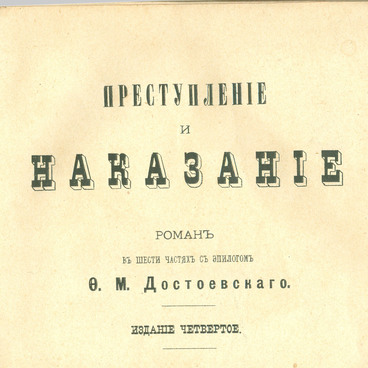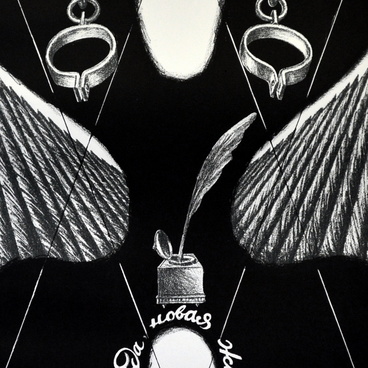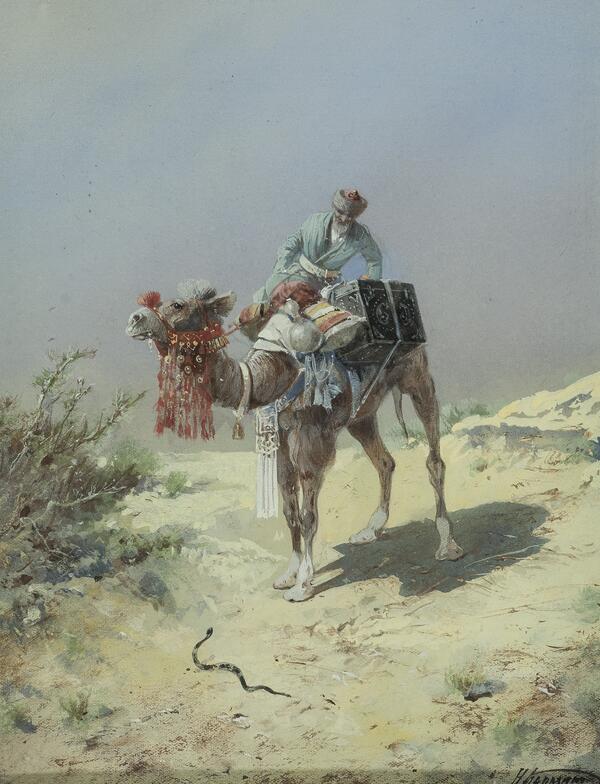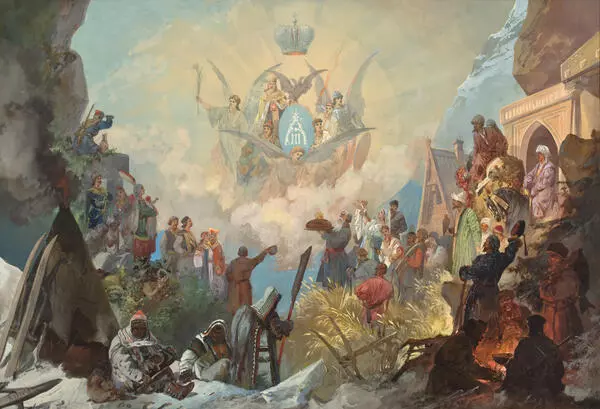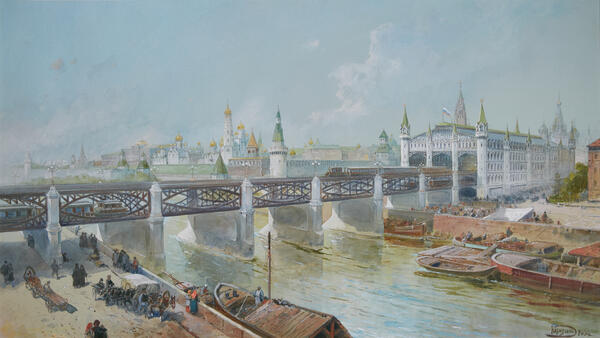Nikolai Karazin was a Russian battle painter, graphic illustrator, writer, and ethnographer. Born noble, Karazin was an academician of the Imperial Academy of Arts and a member of the Imperial Russian Geographical Society. In 1862, having graduated from the 2nd Moscow Cadet Corps, he joined a Dragoon Regiment which he soon left in favor of Saint Petersburg Imperial Academy of Arts. He retired as a junior captain. Having studied under a famous battle painter BogdAn WIllewAlde, Karazin left the academy and then took part in the Bukhara and KhIva military campaigns.
After retiring, he studied under the French engraver Fabien Gillot /-lo:/. He took part in two scientific expeditions exploring Central Asia (1874 and 1879). Between the expeditions, he served as a war correspondent in the Serbian–Turkish and Russo–Turkish Wars. In the 1880s, Karazin was sent to Turkestan to prepare sketches for paintings on the Asian campaigns. Due to his numerous watercolor, pencil, and pen-and-ink work, the artist became a full-fledged celebrity. He illustrated books by Alexander Pushkin, Nikolai Gogol, Leo Tolstoy, Ivan Turgenev, DmItry Grigorovich and others.
Nikolai Karazin was among the first to illustrate Dostoevsky’s works. In 1893, “Fifteen Watercolor Illustrations for Fyodor Dostoevsky”s Works” came out in Saint Petersburg. It is a rare lifetime publication of Karazin’s works with a brown decorative editor’s bookbinding and a wine-colored leatherette spine. The upper part of a binding case has a chest-high portrait of Dostoevsky on the left and the publication name on the right. The book features colored chromolithographs for Dostoevsky’s works: The Village of Stepanchikovo, The House of the Dead, Crime and Punishment, Netochka Nezvanova, The Brothers Karamazov, Demons, Humiliated and Insulted, and Poor Folk. Chromolithographs occupy the right page of each broadside each, while left pages provide a short description of a literary piece or its episode which the chromolithograph illustrates. Some pages were lost; only 13 illustrations out of 15 survived.

